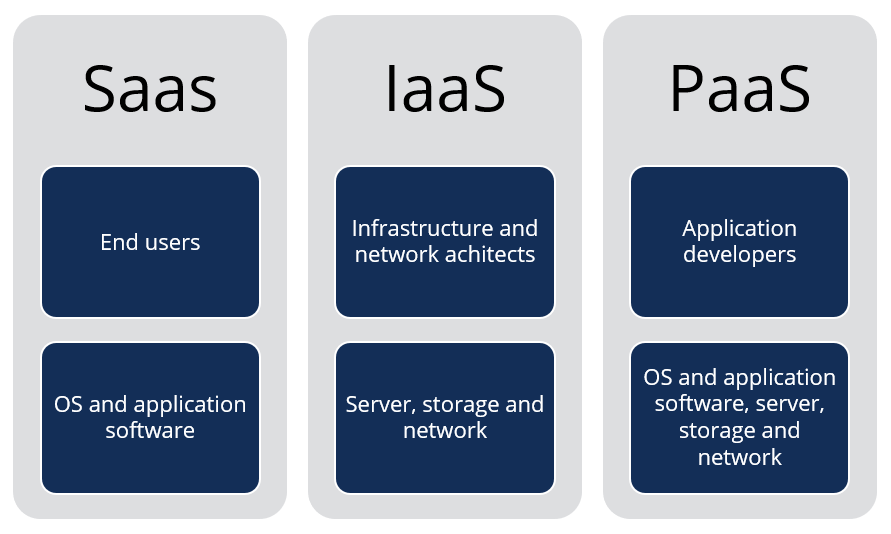LinkDaddy Cloud Services Revealed: Professional Strategies for Cloud Services Press Release Excellence
LinkDaddy Cloud Services Revealed: Professional Strategies for Cloud Services Press Release Excellence
Blog Article
Simplify Your Facilities With Cloud Solutions
As companies browse the ever-evolving landscape of innovation and information administration, the role of cloud services in streamlining facilities has actually become significantly noticeable. How can businesses properly browse this shift and truly open the potential of cloud solutions for streamlining their infrastructure?
Benefits of Cloud Provider
Cloud services offer a streamlined technique to handling IT framework, offering businesses with flexibility, scalability, and cost-efficiency. One of the essential benefits of cloud services is the scalability they offer.
In addition, cloud solutions eliminate the demand for companies to buy costly software and hardware. This cost-efficiency is a substantial benefit, particularly for small to medium-sized enterprises looking to minimize ahead of time expenses. By utilizing cloud services, businesses can access top notch IT sources without the hefty price associated with standard framework configurations.
In addition, cloud solutions offer businesses with the adaptability to access their data and applications from anywhere with a web connection. This degree of access improves partnership amongst teams, allows remote job, and enhances overall efficiency. The flexibility provided by cloud services equips services to adjust promptly to transforming market conditions and consumer demands.
Expense Financial Savings and Scalability
In addition to the functional advantages highlighted previously, the integration of cloud solutions into a firm's infrastructure produces substantial expense savings and improved scalability. Cloud solutions supply a pay-as-you-go version, allowing organizations to range resources up or down based upon present needs, consequently avoiding the expenses associated with maintaining excess capacity. This flexibility enables business to adapt promptly to changing demands without incurring unnecessary expenditures.
Furthermore, cloud solutions get rid of the demand for in advance financial investments in hardware and software application, minimizing capital investment. Operating expenses are also minimized as companies no more require to handle and maintain physical servers, resulting in reduced power consumption and IT staffing prices. Furthermore, cloud solutions offer automated updates and upkeep, making sure that the facilities continues to be safe and secure and current without needing hand-operated interventions.
Improved Safety Steps
Implementing stringent safety and security measures is vital when integrating cloud services right into a company's facilities to guard sensitive information and make sure conformity with market regulations. Cloud solution companies offer enhanced security attributes such as data encryption, firewall software protection, and multi-factor authentication to alleviate cybersecurity risks.
Additionally, routine protection audits and compliance assessments assist make sure and determine susceptabilities adherence to market requirements. Firms can likewise benefit from features like automatic security updates and real-time threat surveillance provided by cloud company. By prioritizing security steps and remaining aggressive in resolving prospective risks, services can confidently utilize cloud services while securing their useful information from unapproved accessibility or violations.
Transitioning to Cloud Infrastructure
To successfully incorporate cloud services into a firm's infrastructure, an organized method that deals with the change towards cloud-based solutions is imperative. Transitioning to cloud facilities includes cautious preparation and execution to make sure a smooth migration procedure. The initial step is to examine the present facilities and identify which systems and applications are suitable for movement to the cloud. This assessment must consider factors such as information sensitivity, compliance try this site requirements, and efficiency needs.
When the analysis is total, a migration method must important link be developed. This strategy should describe the timeline, resources, and duties for relocating each element to the cloud. It is necessary to connect this plan plainly to all stakeholders to guarantee alignment and minimize disruptions during the shift.
Throughout the movement testing, tracking and procedure are essential to identify and resolve any issues immediately. Regular checkpoints ought to be developed to track progress and make needed changes. Additionally, training for workers on utilizing cloud services should be given to make certain a successful shift and make the most of the benefits of the brand-new infrastructure.
Ideal Practices for Cloud Adoption
Effective adoption of cloud services rests on the tactical placement of organization purposes with technical abilities and business preparedness. To make sure a smooth transition to the cloud, companies must begin by carrying out a comprehensive evaluation of their present framework and recognizing which workloads are best fit for cloud movement. It is vital to involve vital stakeholders from different divisions in the decision-making procedure to acquire buy-in and attend to any worries at an early stage.
One more ideal technique for cloud fostering is to prioritize safety and compliance. Organizations must thoroughly assess the protection steps used by cloud provider and make certain that their data is safeguarded according to industry requirements and regulative needs. Applying robust information encryption, accessibility controls, and regular protection audits can help reduce dangers connected with cloud adoption.

Conclusion

As businesses browse the ever-evolving landscape of innovation and data monitoring, the function of cloud services in streamlining facilities has become significantly noticeable - Cloud Services. Just how can organizations properly navigate this change and really unlock the possibility of cloud solutions for streamlining their infrastructure?
Cloud services use a streamlined strategy to managing IT framework, supplying services with versatility, cost-efficiency, and scalability. By using cloud services, organizations can access top notch IT resources without the hefty price tag connected with standard framework arrangements.
To make certain a smooth transition to the cloud, companies ought to start by carrying out a thorough assessment of their present facilities and identifying which workloads are best suited for cloud migration.
Report this page